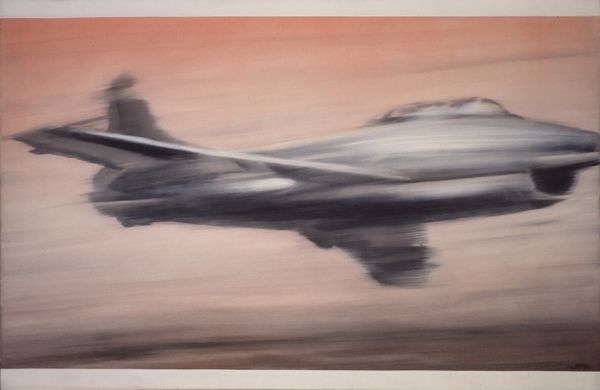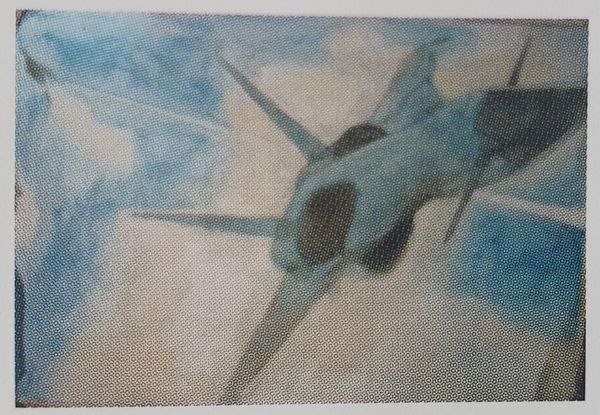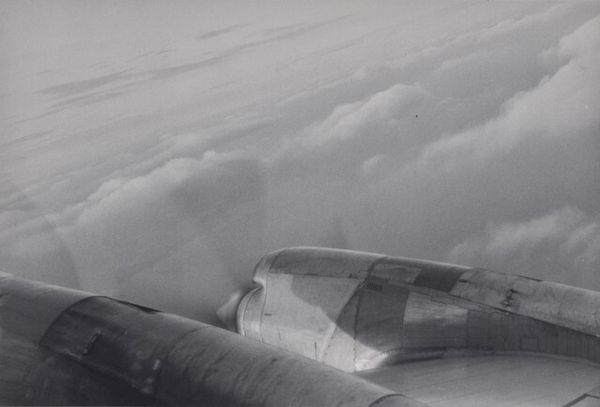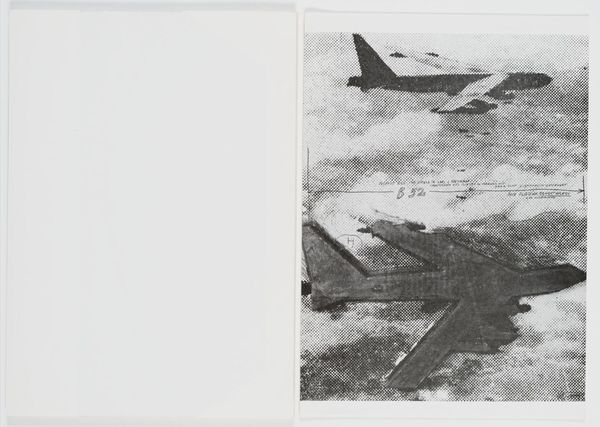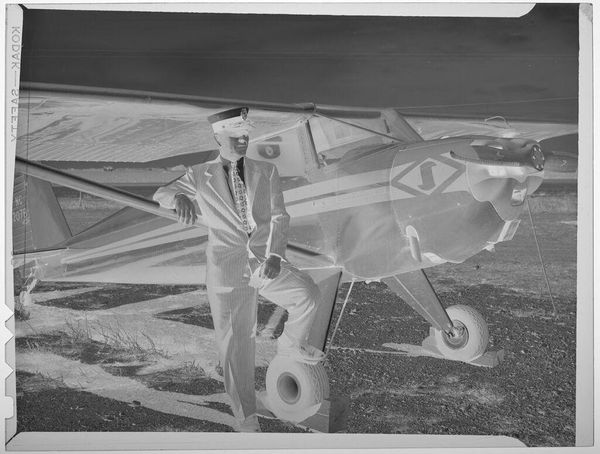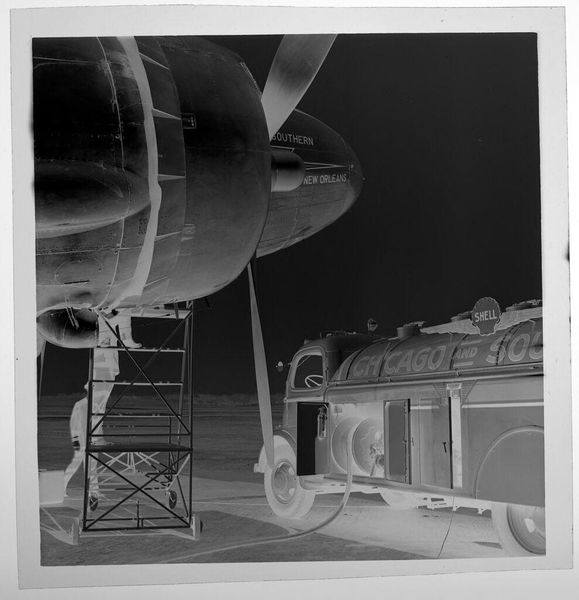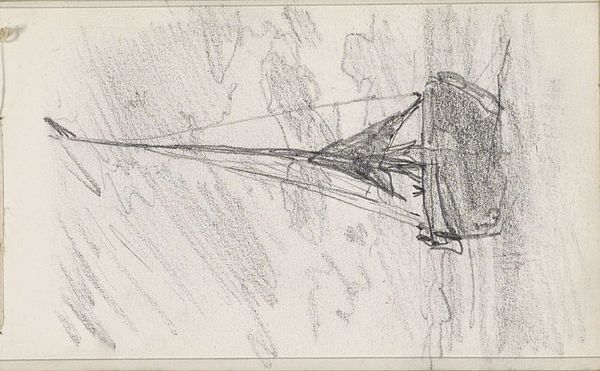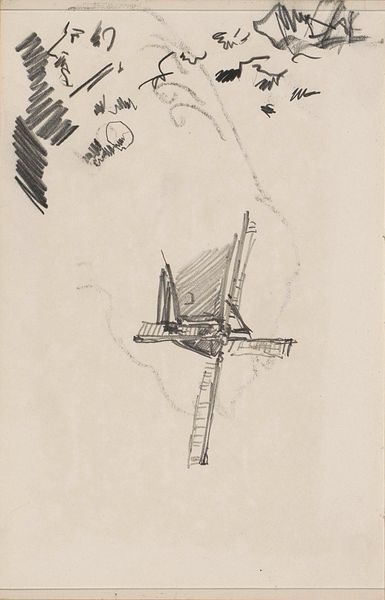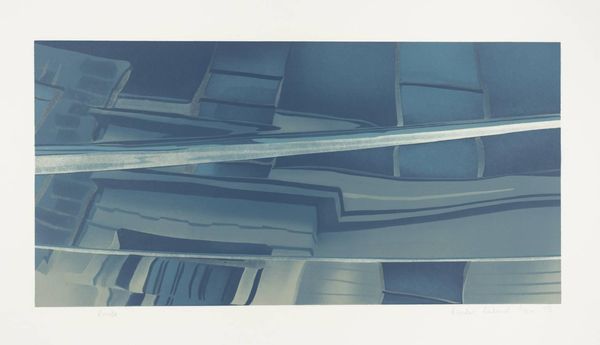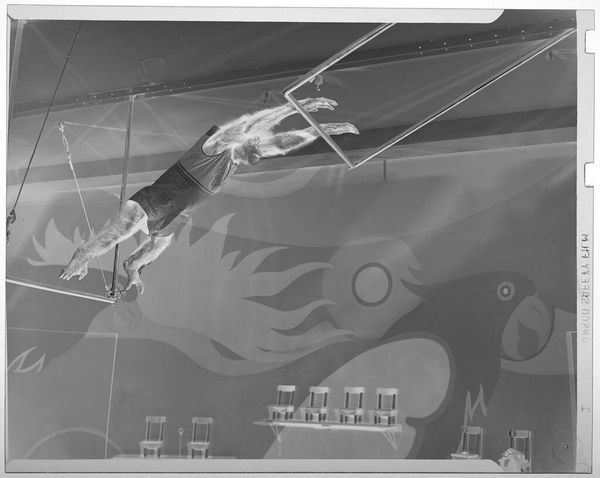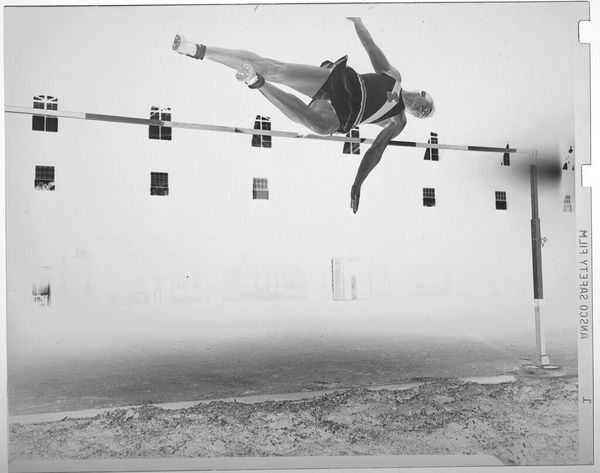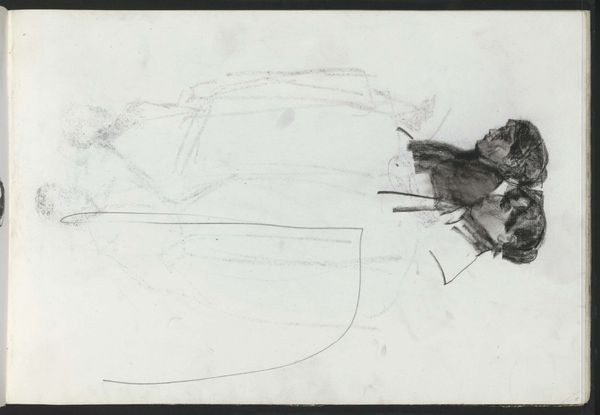
acrylic-paint, photography
#
acrylic
#
negative space
#
conceptual-art
#
acrylic-paint
#
photography
#
acrylic on canvas
#
geometric
#
capitalist-realism
#
abstraction
#
pop-art
#
cityscape
#
modernism
Copyright: 2019 Gerhard Richter - All Rights Reserved
Curator: Let's talk about "XL 513," an artwork rendered by Gerhard Richter back in 1964. He used acrylic on canvas to depict a blurry sort of fighter jet soaring across the scene. What's your gut reaction to this, seeing it now? Editor: Well, immediately, there's a haunting, spectral quality. The blurring makes it feel like a ghost plane, trapped between eras and technologies. But focusing on structure, the dominance of diagonals creates visual instability. What is the source photograph Richter chose, do we know? Curator: He definitely wasn’t aiming for precision with that blur! Richter often sourced imagery from newspapers and personal photos, playing with the space between representation and reality. I wonder if he had a fascination with air travel. Perhaps it mirrors that feeling of being airborne, both powerful and disconnected. Editor: True. We know that Richter developed the blurring technique from 1963 onwards. Here the effect deconstructs the subject. By reducing detail, Richter emphasizes the work's materiality. The geometric forms of the aircraft contrast to that deliberate lack of definition. This juxtaposition is really at the work's core, right? Curator: Absolutely. The abstraction is almost an echo of post-war anxiety. It reminds me that technological progress wasn't always seen as rosy. It reminds us, still, how easily such advances can overshadow or obliterate the individual and our surroundings. I wonder how audiences might interpret "XL 513" today? Editor: Post-structuralist critics could suggest this as an instance where the signifier has broken loose from its signified! Richter offers the viewer no representational crutch! The brushstrokes themselves, the texture of the acrylic against the canvas become the primary point of focus. The blurred composition foregrounds the inherent flatness of the picture plane, and invites engagement. Curator: Hmm, so there's a visual flattening… Like the fading away of context itself? To me the blurring almost suggests that memories aren’t precise; time sort of smudges our recollections of people, places, events, or moments gone by, so what can remain but a distortion? It really has quite a psychological grip on you. Editor: Agreed! Considering "XL 513" purely as a formal arrangement of geometric elements, textures, and color relationships, we uncover complex aesthetic interactions and insights that open multiple lines of questioning about reality itself, just as the artist may have intended.
Comments
No comments
Be the first to comment and join the conversation on the ultimate creative platform.
